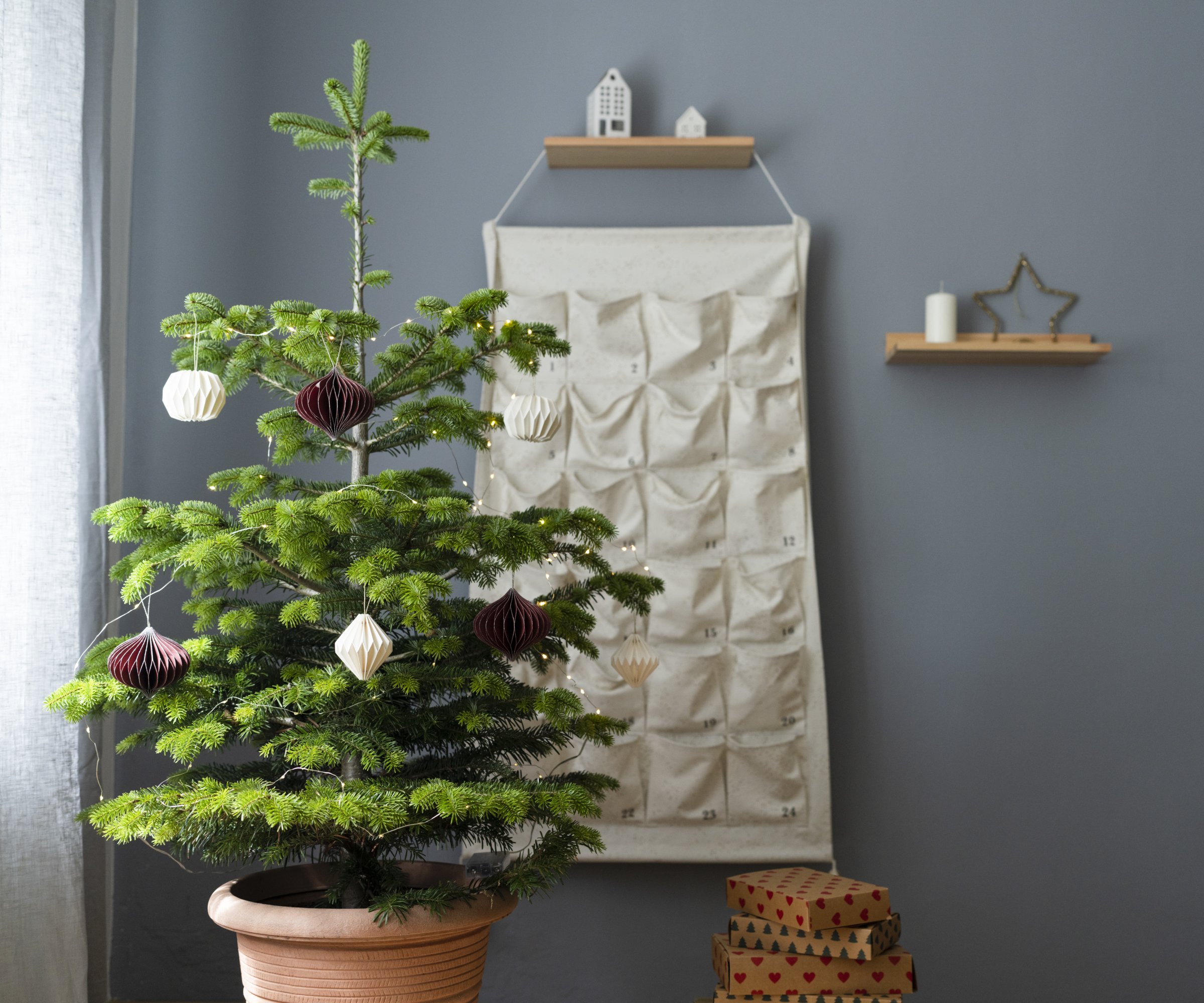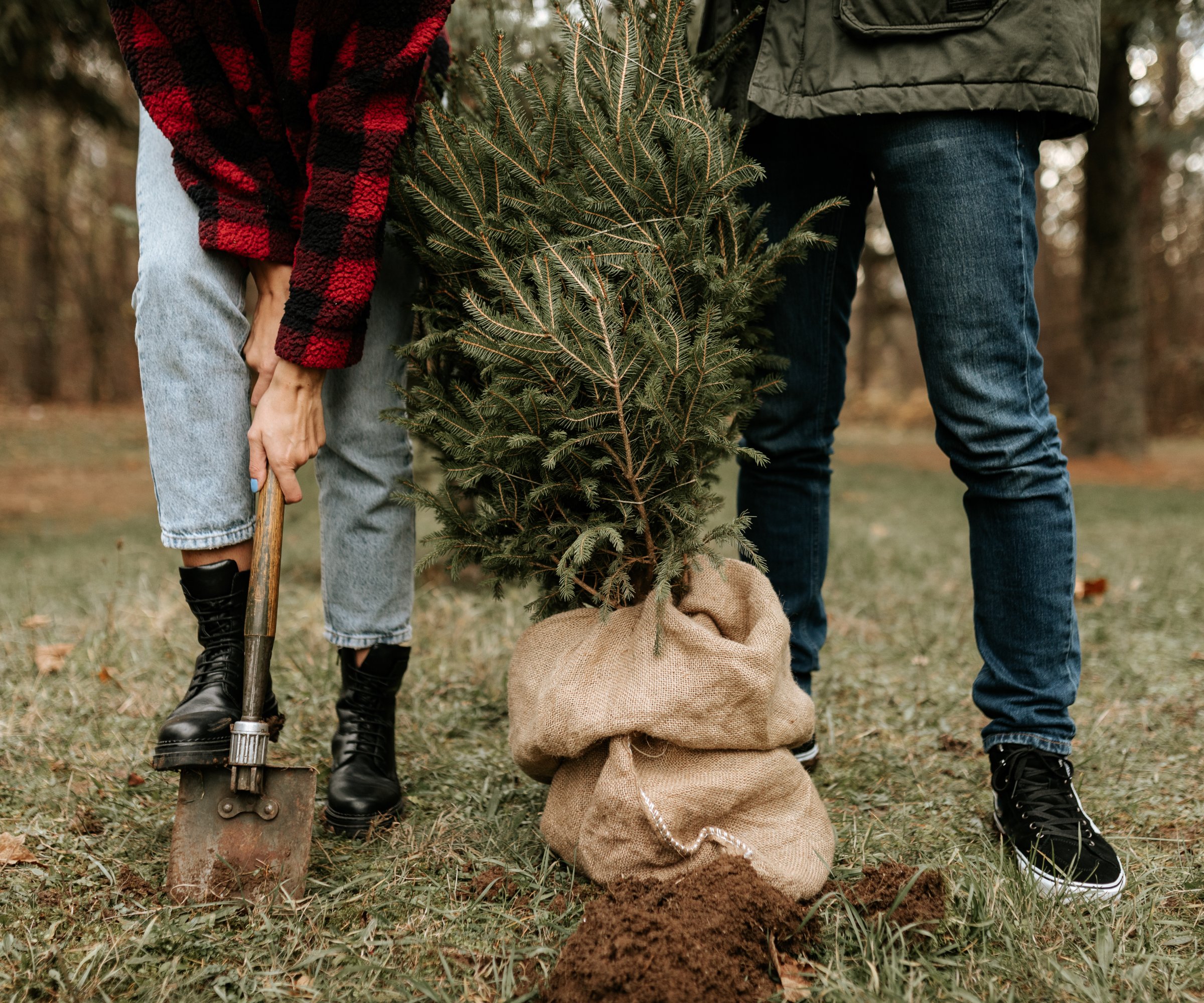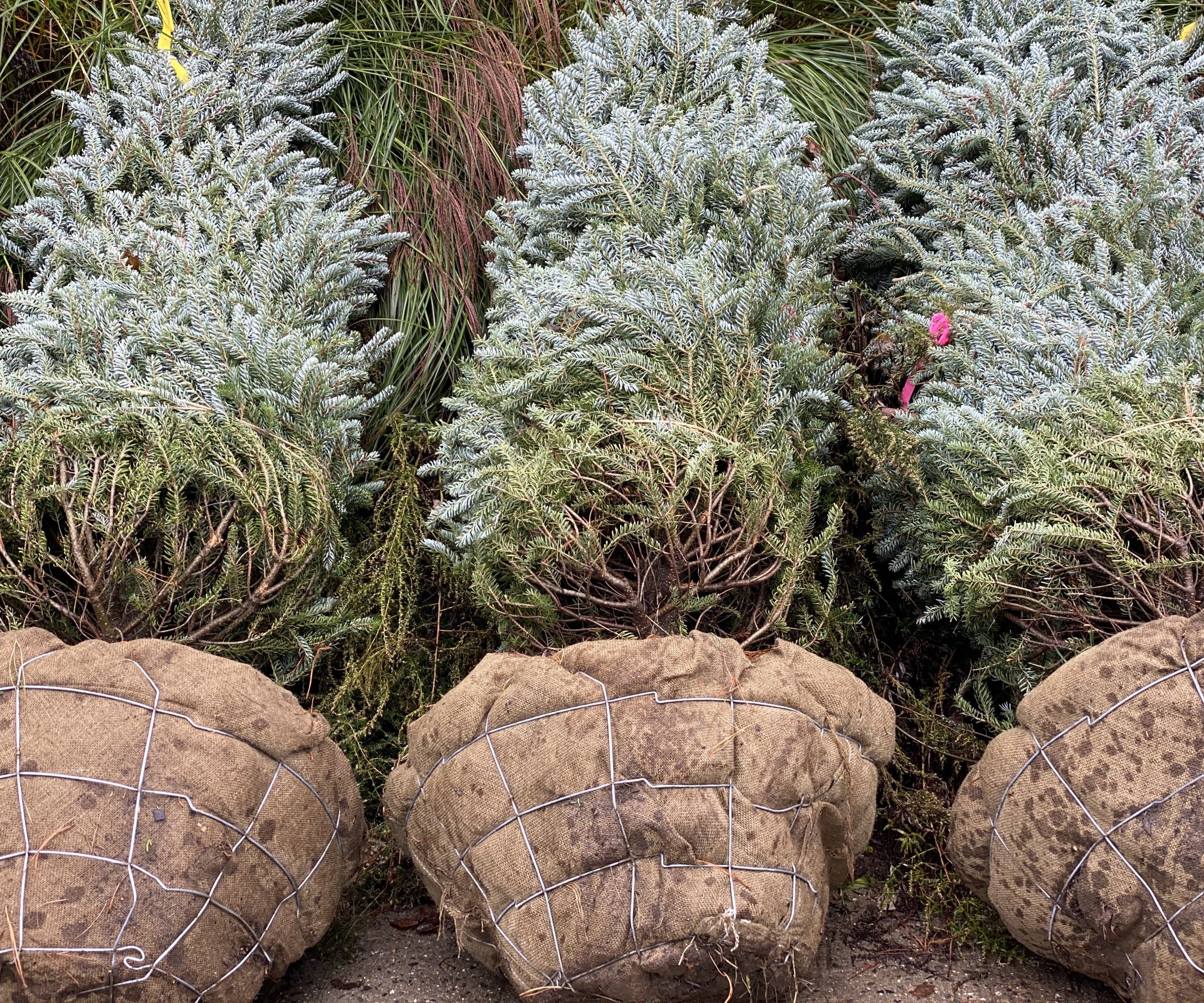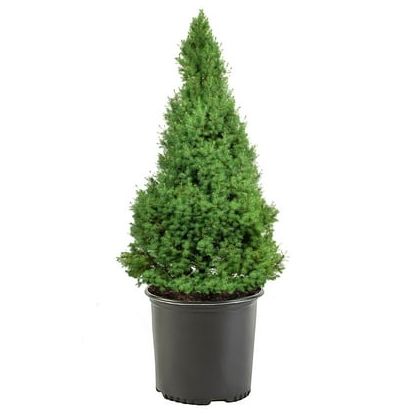Maggie Gyllenhaal and Peter Sarsgaard’s Magical Christmas Tree Tradition Keeps Getting Better Every Year – and It’s So Easy to Recreate
The couple’s replantable Christmas tree has grown into a family ritual in the Vermont woods – and you only need one simple step to recreate it at home.


If you’ve ever wondered whether it’s possible to grow your own Christmas tree instead of buying a cut one every year, actor Peter Sarsgaard has a tradition that shows just how meaningful – and sustainable – it can be. He and his wife, Maggie Gyllenhaal, choose a balled-and-burlapped tree each holiday season, enjoy it indoors, and then replant it outdoors to keep growing long after Christmas ends.
In an interview with People, Sarsgaard described how it all began: “Many years ago I bought a Christmas tree with the root ball on it in Vermont. Took it back to my house, managed to get it inside. It was huge. And we used it and everything inside and then with a tractor, took it back out through the front door and planted it.”
That same tree is still thriving today. As he explained, “And it is now the biggest damn tree. We decorate it and it’s kind of like way out in the middle of the woods. I put a solar battery on it and just, I dunno, there’s something really awesome about this Christmas tree in the middle of the forest.”
Over the years, the family has watched the tree grow into a living reminder of their holidays together – and it’s a tradition you can recreate at home. Here’s how to get started.

1. Choose the Right Kind of Tree
To replant a tree after the Christmas season, start with a root-ball (balled-and-burlapped) tree, not a cut tree. These trees are grown in a field and dug up with a solid soil ball wrapped in burlap, which preserves the root structure for when you need to replant them.
Michigan State University horticulture expert Dr. Cregg advises approaching selection the same way you would for any landscape tree: “Make sure the tree is hardy for your location and suited for your soil and exposure,” he says. “Even though the tree might only be 6 or 7 feet tall now, many Christmas tree species can grow 2 feet per year.”
Rick Dungey from the National Christmas Tree Association, another specialist in dug trees, echoes this point, saying, “The main thing would be to ensure that the species of conifer is known to thrive in your climate and soil type.”
Sign up for the Gardening Know How newsletter today and receive a free copy of our e-book "How to Grow Delicious Tomatoes".
When picking one out, make sure the root ball is firm and intact. Yoúll want the root system to be healthy when it goes back into the ground. If you would prefer to keep the tree in a large container, make sure it’s deep enough and has good drainage. However, if longevity is your goal, a burlapped tree is most ideal.
2. Bring It Indoors – But Not for Too Long
After you’ve brought the tree inside, make sure you treat it gently. Place it in a cool, relatively shady spot. That means keep it away from radiators, heaters, and fireplaces. Water the root ball daily to keep it moist, but don’t overwater it either. Use a large bucket or galvanized tub underneath to catch excess moisture.
Dr. Cregg emphasizes minimizing disturbance, telling us, “It’s always a good idea to minimize disturbing the root ball… and treat it like a houseplant while indoors.”
As for how long your tree can stay inside, both experts agree on the same guideline: no more than two weeks, especially in colder climates.
“Trees begin to lose cold hardiness as soon as they’re brought indoors,” Dr. Cregg warns. Dungey adds, Most experts recommend no more than a couple weeks.”

3. Prepare for Replanting
Before Christmas, pick the spot where you’ll replant your tree. The ideal place is a well-drained area with room for the tree to continue growing.
Dig the planting hole twice as wide as the root ball. If you can, do this before it frosts and reserve the soil in your garage or a protected area.
Dungey echoes this practical tip, saying, “Dig the hole before buying the tree so you don’t have to worry about the ground freezing.”
4. Re-Acclimate the Tree After the Holidays
When the hustle and bustle of Christmas is over, don’t be in a rush to get your tree back outside. There are still some things to take into account. Dungey has this recommendation: “Move it to a garage or 3-season porch for at least a few days before and after… especially if the temperature outside is a lot lower than indoors.”
Once that’s complete, and your planting hole is ready, remove any string or nylon twine, and cut back the top part of the burlap to allow the roots to expand. Set the root ball into the hole, making sure the top is level or slightly above the ground.
5. Planting and First-Year Care
After placing the tree:
- Fill in the hole with your saved soil, gently tamping to eliminate air pockets
- Build a water-holding basin around the tree and give it a nice, deep soak
- Add 2-4 inches of mulch around the root area. Make sure the mulch stays a few inches away from the trunk.

Why This Tradition Matters
By choosing a root-ball tree for Christmas and replanting it like Peter Sarsgaard and Maggie Gylenhaal, you’re not only celebrating the holiday season, you’re giving back to the earth in a meaningful way.
Your tree becomes a growing legacy, a living piece of yuletide cheer that thrives year after year. Just imagine, maybe your kids will use the same tree one day? When you do it right, this tradition keeps growing just like your tree.
Christmas Tree Nurseries
If you’d prefer to skip the heavy lifting and purchase a ready-to-replant tree, several U.S. nurseries specialize in balled-and-burlapped evergreens specifically suited for holiday use. Sugar Pines Farm offers live, balled Christmas trees, including Blue Spruce and Canaan Fir, that are meant to be enjoyed indoors briefly and then planted outdoors afterward.
For larger or more landscape-focused options, Kline’s Tree Farm has high-quality balled-and-burlapped conifers with well-established root systems, ideal for anyone hoping their Christmas tree will continue thriving for decades.
Live Christmas Tree Essentials

Sarah is a lifestyle and entertainment writer with over a decade of experience covering everything from celebrity news to home and style trends. Her work has appeared in outlets including Bustle, The Everygirl, Hello Giggles, and Woman’s Day. When she’s not writing about the latest viral moment, she’s cultivating her love of gardening and bringing a storyteller’s eye to all things green and growing.


